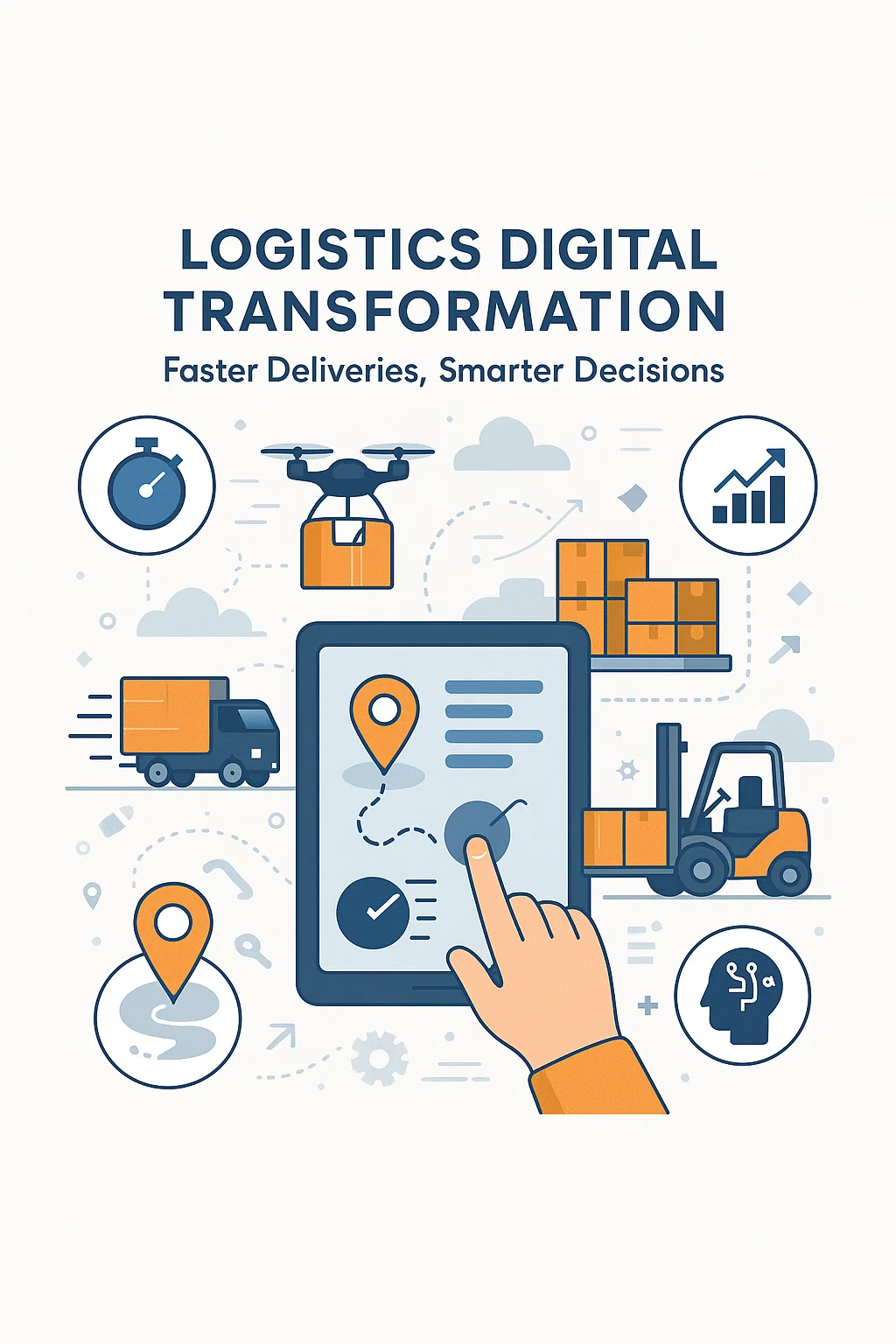Logistics Digital Transformation: Faster Deliveries, Smarter Decisions
Imagine this: A truck driving across the country, not just delivering goods but sending real-time updates about traffic, tire pressure, temperature in the cargo hold, and even the driver’s fatigue level. That’s not a futuristic dream, it’s the reality IoT is building every day in the transport and logistics sector.
The Internet of Things (IoT) is no longer a buzzword. It’s the invisible network of sensors, GPS modules, RFID tags, and smart devices that’s making logistics smarter, faster, and more resilient.
Real-Time Logistics Tracking: Ending Delivery Uncertainty
Before IoT, logistics managers often had to rely on phone calls, static reports, and a lot of assumptions. Packages got lost. Trucks arrived late. Customers got frustrated.
Now? IoT-powered GPS trackers allow companies to monitor the exact location of vehicles and shipments 24/7. A logistics manager in Nairobi can know, down to the minute, when a delivery truck will arrive in Mombasa, and customers can get live updates via an app. It’s the kind of visibility that builds trust and smoothens operations across the board.
Predictive Maintenance: Fix It Before It Breaks
Ever been stranded because of a car breakdown? Scale that up to a nationwide fleet, and you’ll understand why predictive maintenance is a game-changer.
By installing sensors on trucks, companies can monitor the health of engines, brakes, and even tire wear. The data tells them when a component is likely to fail before it actually does. This shift from reactive to proactive maintenance reduces downtime, prevents costly repairs, and keeps goods moving without disruption.
Smart Warehousing Solutions: Enabling Connected Supply Chains
IoT doesn’t stop at vehicles. Inside modern warehouses, RFID tags and smart shelves are creating a new level of inventory intelligence. Instead of manually scanning boxes, smart shelves automatically detect when a product is picked up, misplaced, or running low.
Take Amazon, for example. Their fulfillment centers use IoT and robotics to move shelves to workers, rather than workers to shelves. The result? Shorter delivery times, better stock accuracy, and fewer errors.
Route Optimization for Logistics: Faster Deliveries, Lower Costs
Fuel prices aren’t going down any time soon. But with IoT, logistics companies are finding new ways to cut costs and emissions.
IoT sensors analyze traffic patterns, weather conditions, and road closures in real time to suggest the most efficient routes. It’s not just about arriving faster, it’s about burning less fuel, reducing emissions, and meeting sustainability goals.
Cold Chain Monitoring Tech: Protecting Temperature-Sensitive Goods
For industries like pharmaceuticals and fresh food, temperature control during transit is non-negotiable. IoT makes it possible to monitor and control temperature and humidity levels from departure to delivery.
Picture a refrigerated truck carrying vaccines. If the temperature starts to rise above safe levels, an alert is sent instantly, and action is taken immediately, whether it’s rerouting, remote cooling, or a quick pit stop.
Final Thoughts: The Road Ahead
IoT in transport and logistics isn’t just a tech upgrade, it’s a mindset shift. It’s about transforming guesswork into insight, delays into precision, and complexity into clarity.
Whether you’re a global logistics giant or a small courier company, the opportunities are here and now. IoT is giving logistics the one thing it always needed but rarely had, eyes on everything, in real time.
And the best part? We’re only getting started.

